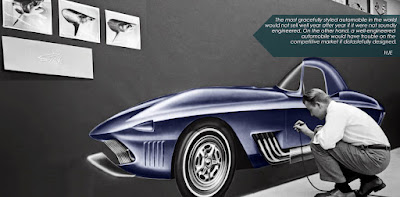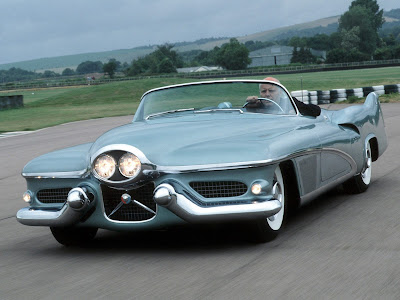Back in 1951, this convertible Buick LeSabre was not just extreme looking, it was way ahead of its time. It had technology advancements that weren't even thought of yet and would give us a sneak peek into the future of the automotive industry.
Harley J. Earl was the lead designer of this beautiful piece of machinery. From 1927 to 1958, he was General Motors' Head-of-Styling and had his hands in the cookie jar of many breakthrough designs and technology projects that would change the auto industry for years to come.
The styling was nothing short of artwork for this concept Buick. Earl designed the first wraparound windshield that gave the driver a panoramic view of the road and surrounding areas. It also saw the likes of GM's first rear brake coolers that used functioning rear scoops on the back quarter panel. The scoops were designed and positioned to cool the brakes and the battery located in the back.
One of the very noticeable features that people hadn't seen too much of was the hidden futuristic headlights that would pop out from behind the grille with a flip of a switch. Also, the Buick LeSabre had a feature on it that, to this day, is only really used on Indy and Formula-1 cars. The automatic jack system was the first of its kind and allowed you to work under your car without a floor jack or jack stands. Maybe today, the feature doesn't sound like much but think back to 1951 and the stock emergency jack that would be provided for you if you had an unfortunate flat tire. Remember, in '51, there were no cell phones to call AAA or a friend and no OnStar-type systems.
Another feature that would really stun you back in 1951 was the automatic sensors that could recognize rain and put your rag-top and windows up without you being around to control them. The Buick even had a backup source of power, so if your battery died, you could still at least control features like the radio, windows, and the rag-top.
This concept was designed from Earl's imagination and his love for jet airplane designs. The sleek styling lines and the flamboyant curves are what really sets this Buick apart. The interior even showed a little bit of aeronautical passion, with a dashboard that included an altimeter, tachometer, and a compass.
Earl adopted this 1951 Buick LeSabre as his own and drove it till he had about 50,000 miles on it before handing it over to the GM museum in the 1960s. Earl was a well-respected engineer who became a legend along with his creations like this one.









